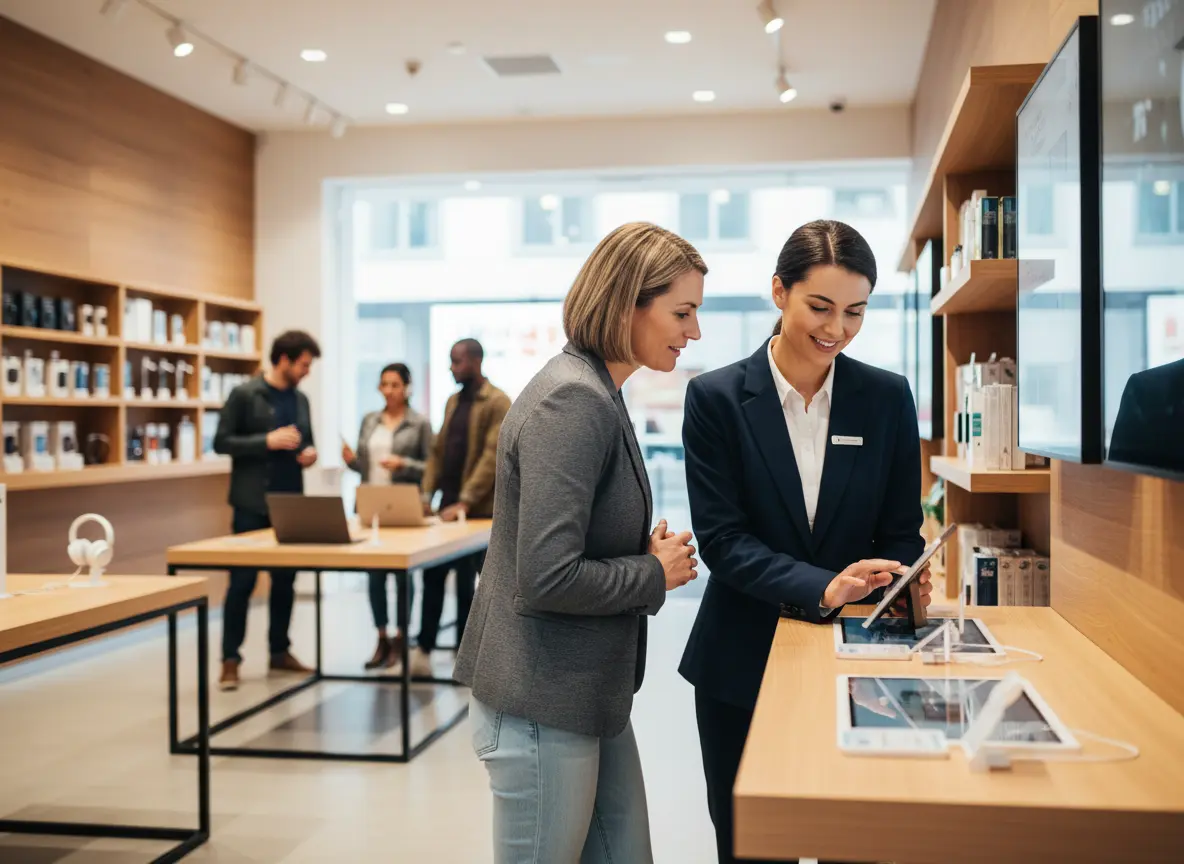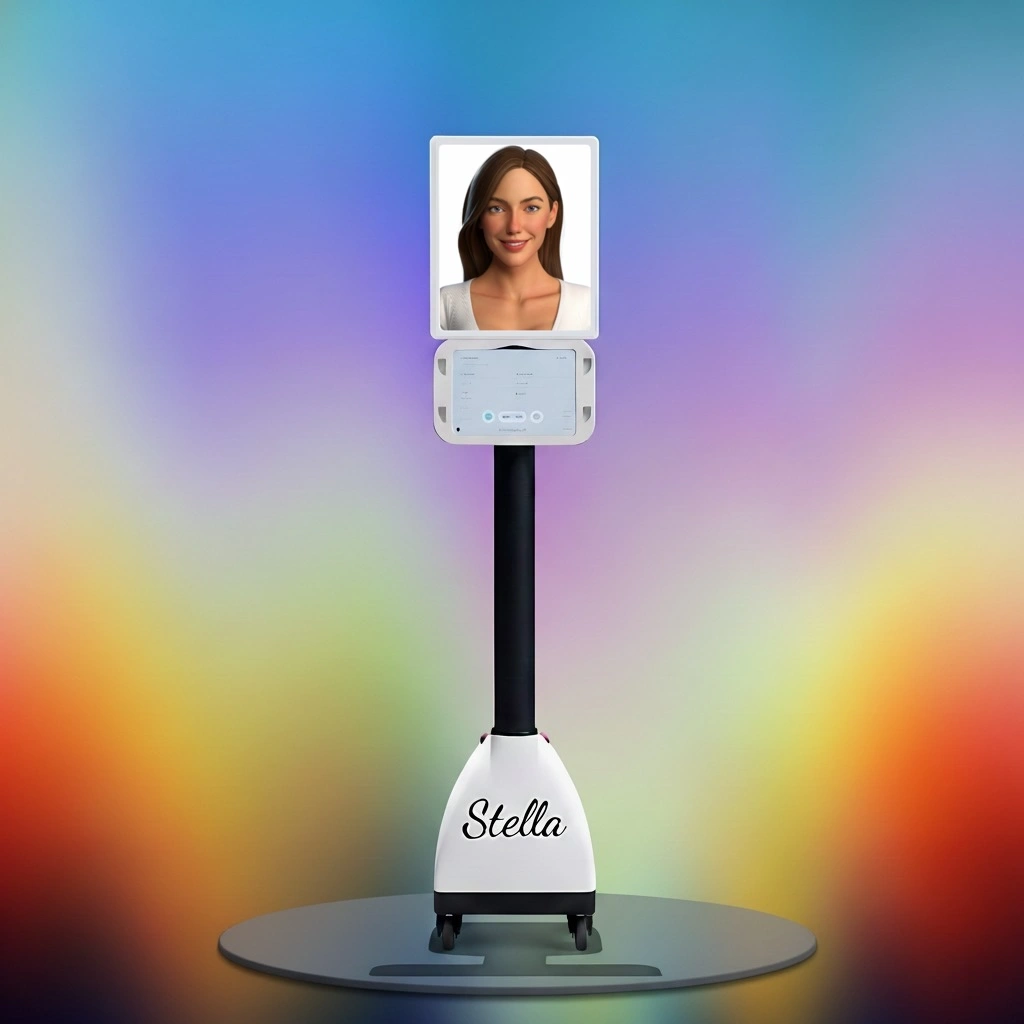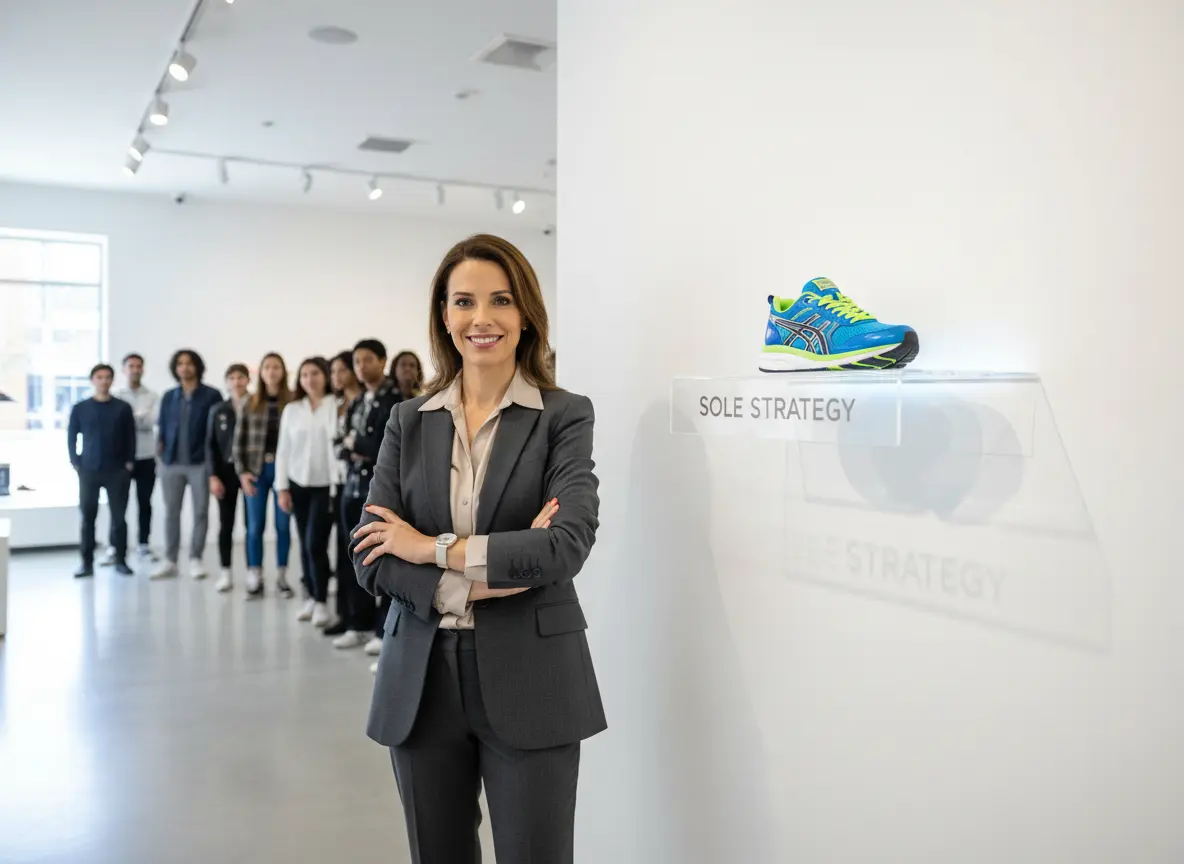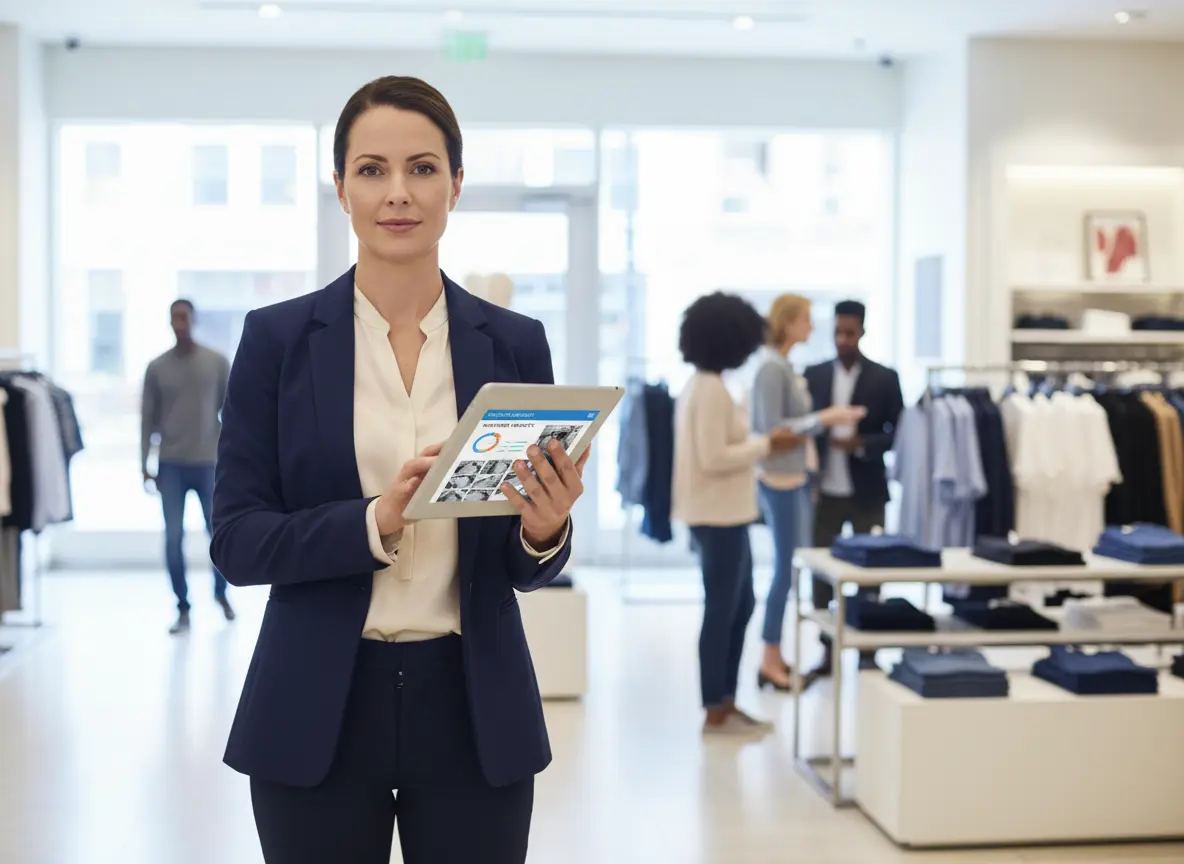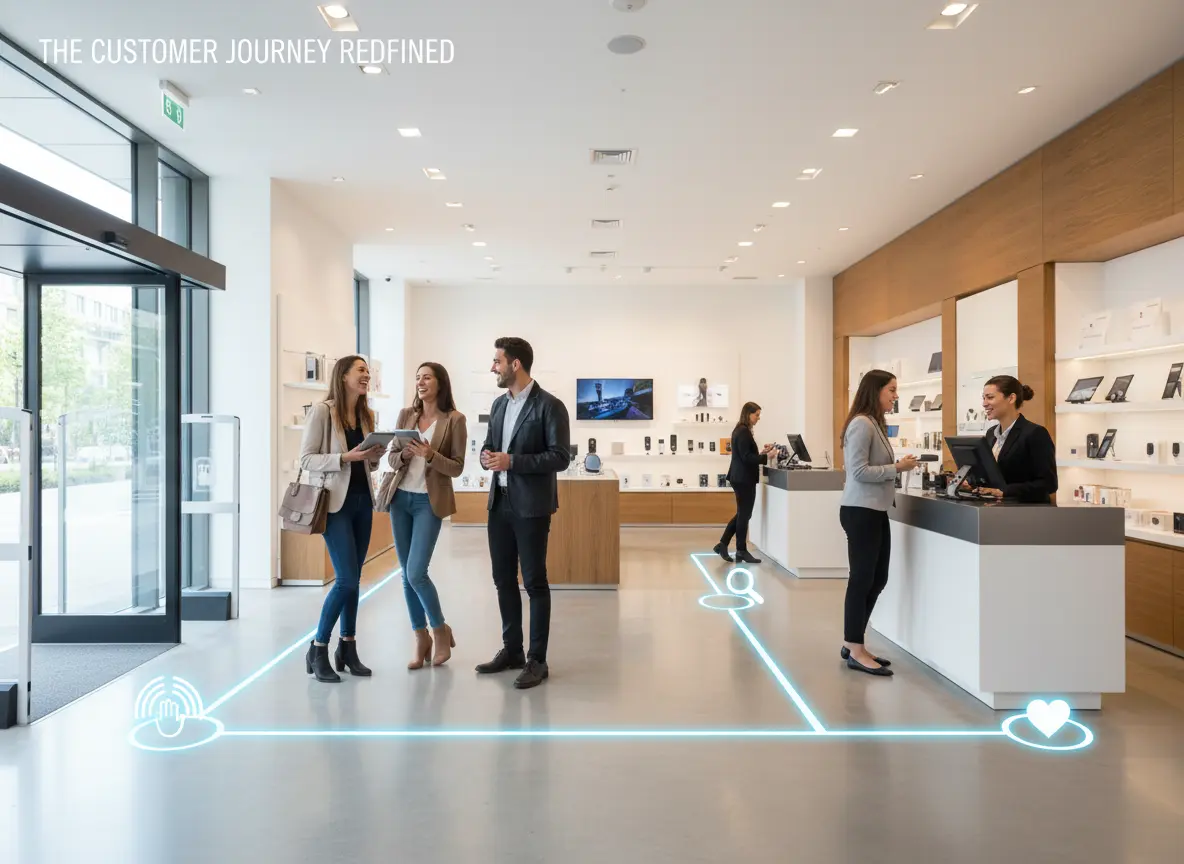Welcome to the Fortress of Solitude. Or Is It Your Store?
Picture this: A potential customer, let’s call her Carol, needs a new router. Her old one has started making a sad, wheezing noise, and her Netflix now buffers more than it plays. She bravely walks into an electronics store. She is immediately hit by a wall of sound from 50 different TVs, a dizzying maze of aisles packed with black and silver boxes, and an overwhelming sense of... inadequacy. The staff are huddled together, speaking in a dialect composed entirely of acronyms and model numbers. Carol, fearing she might be asked to recite the first 100 digits of pi to prove her worth, quietly backs out and heads home to order the first thing that pops up on Amazon.
Sound familiar? For too long, many electronics stores have been designed by tech wizards, for tech wizards. It’s an exclusive club, and if you don’t know your Gbps from your GPUs, you’re not getting in. But here's the dirty little secret: the "Carols" of the world—the tech novices, the casual users, the people who just want their stuff to work—represent a massive, untapped market. By transforming your intimidating fortress into an inviting playground, you don’t just gain a customer; you gain a loyal advocate.
Taming the Tech Jungle: A Visual Overhaul
Before a customer ever speaks to an employee, your store's physical environment has already had a long conversation with them. The question is, what is it saying? Is it whispering, "Welcome, friend, let's find a solution together"? Or is it screaming, "IF YOU DON'T KNOW WHAT A MOLEX CONNECTOR IS, FLEE NOW"? Here’s how to change the narrative.
De-Clutter and De-Jargon Your Displays
The classic “wall of TVs” is a prime offender. It’s a powerful display of inventory, but for a novice, it’s a recipe for decision paralysis. The same goes for shelves overflowing with endless variations of the same black box. Instead of showcasing sheer volume, focus on clarity and context.
- Create Lifestyle Vignettes: Don't just sell a smart speaker; sell a smart home. Create a small mock living room corner with a TV, a soundbar, smart lighting, and a speaker. Let customers see how the products work together in a real-world setting. This shifts the focus from specs to experience.
- Translate Specs into Benefits: Your signage is your silent salesperson. A sign that reads "OLED 4K TV with 120Hz Refresh Rate and Dolby Vision" is great for the enthusiast. For everyone else, it’s gibberish. Try this instead: "Incredible Picture Quality" with a sub-heading like, "Perfect for cinematic movie nights and ultra-smooth sports." Speak your customer's language, not your engineer's.
Let There Be Light (and Space!)
Many tech stores feel like dimly lit basements where hackers toil away in the dark. This might be a cool aesthetic for a cyber-thriller, but it’s terrible for retail. A bright, open, and clean environment is psychologically welcoming. It reduces anxiety and signals that you’re a professional, modern business. Widen those aisles so customers can browse without feeling trapped. Use spotlights to highlight key products or lifestyle displays. And for heaven's sake, add a splash of color. A single, well-painted feature wall can do wonders to break up the monochrome sea of electronics.
The Power of the "Play" Button
The single greatest advantage brick-and-mortar has over e-commerce is tangibility. So let people touch things! A 2022 study highlighted that the ability to see, touch, and feel products is still a primary driver for in-store shopping. An interactive store is an engaging store.
- Set up a gaming station where customers can actually play a demo.
- Have a soundbar connected via Bluetooth so shoppers can test it with their own music.
- Create a smart home display where a customer can say, "Hey Google, turn the lights blue," and actually see it happen.
The goal is to demystify the technology and make it fun. Turn the shopping experience from a technical exam into a session at a tech discovery museum.
Bridging the Knowledge Gap with a Friendly Face
Even in the most perfectly designed store, questions will arise. But for a tech novice, approaching a busy, hyper-knowledgeable salesperson can be terrifying. They’re afraid of asking a "stupid question." This initial hesitation is where sales are won and lost.
The Human (or Human-ish) Touch
Having a friendly, non-judgmental first point of contact is critical. This is where an automated assistant can be a game-changer. Imagine a customer walking in, and instead of being ignored or sized up, they’re greeted by a friendly presence. Our retail robot, Stella, can stand near the entrance and offer a warm, consistent welcome to every single person. She can answer basic questions like, "Where are the phone chargers?" or "Are you having any sales today?" in a simple, approachable way. This breaks the ice immediately. For the tech novice, asking a robot a "dumb question" feels a lot less intimidating than asking a person. Stella can even be programmed to highlight a "Beginner's Bundle of the Week," proactively guiding novices toward easy, all-in-one solutions.
Re-Wiring Your Sales and Service Approach
A beautiful store is only half the battle. If your team is still communicating in tech-speak and pushing boxes instead of solving problems, you’re back at square one. It’s time to reboot your team’s approach to customer interaction.
Train for Empathy, Not Just Specs
Your staff's deep product knowledge is a valuable asset, but it can become a liability if they can't translate it. The most important skill for selling to a novice isn’t technical expertise; it’s empathy. Train your team to start conversations with questions about the customer's life, not the product's features.
- Instead of: "Are you looking for a Wi-Fi 6 or 6E router?"
- Try: "What kind of problems are you having with your internet at home? Do you have a lot of people streaming or gaming at once?"
Use analogies. A router isn’t a "dual-band gigabit device"; it's a "traffic cop for your internet, creating express lanes for your most important devices."
Curate Solutions, Don't Just Sell Boxes
Stop thinking of yourself as a seller of electronics and start thinking of yourself as a provider of solutions. Carol didn't want to buy a router; she wanted to buy uninterrupted Netflix. Your customers are buying an outcome, not an object. Bundle products together to create easy-to-understand packages:
- The "Ultimate Work-From-Home" Kit: A high-quality webcam, a comfortable headset, and an ergonomic keyboard.
- The "Movie Night Upgrade" Bundle: A 4K streaming stick, a soundbar, and smart accent lighting.
- The "Grandparent-Proof" Tablet Package: A simple tablet pre-loaded with video chat apps and a durable case.
This approach simplifies the decision for the customer and often increases the average sale value for you. It's a classic win-win.
Post-Purchase Peace of Mind
The sale isn't over when the customer leaves the store. For the tech novice, the fear of unboxing and setup is very real. Offering support after the purchase is how you build trust and create a customer for life. Provide a simple, one-page setup guide with large fonts and clear diagrams. Create a short setup video and link to it with a QR code on the receipt. Offer a paid "white glove" setup service. Knowing that help is available if they get stuck is a powerful motivator for a customer to buy from you instead of a faceless online giant.
A Quick Reminder About Stella
As you rethink your store's flow and your team's approach, remember that the perfect customer journey starts with a perfect first impression. An in-store assistant like Stella ensures every shopper is greeted warmly and offered help, setting a welcoming, low-pressure tone from the moment they walk in—no breaks, no bad days, just consistent, friendly assistance.
Conclusion: Time to Open the Doors
Transforming your store from intimidating to inviting isn't about "dumbing down" your offerings. It’s about being a better translator. It’s about showing empathy and understanding that your customers aren't buying technology; they're buying what technology can do for them.
So take an honest look at your store. Walk through the front door and pretend you know nothing about the products you sell. Is it a welcoming space? Is it easy to understand? Is it a place where "Carol" would feel comfortable asking for help? By focusing on a clear layout, benefit-driven communication, and a solution-oriented sales process, you can throw open the doors of your fortress and welcome in a whole new army of loyal, grateful customers.
